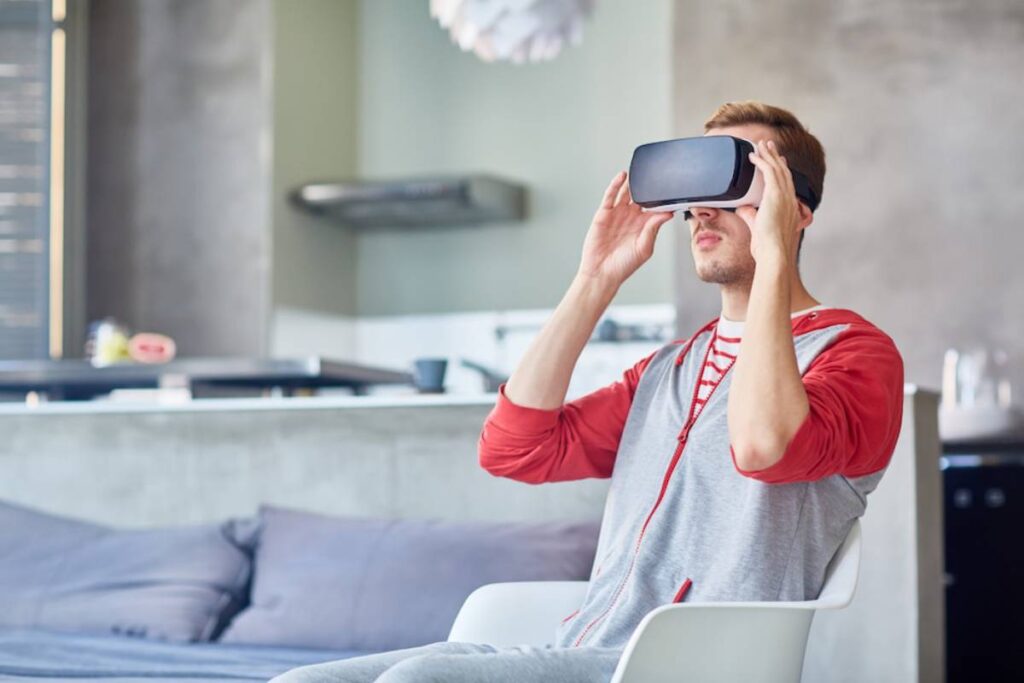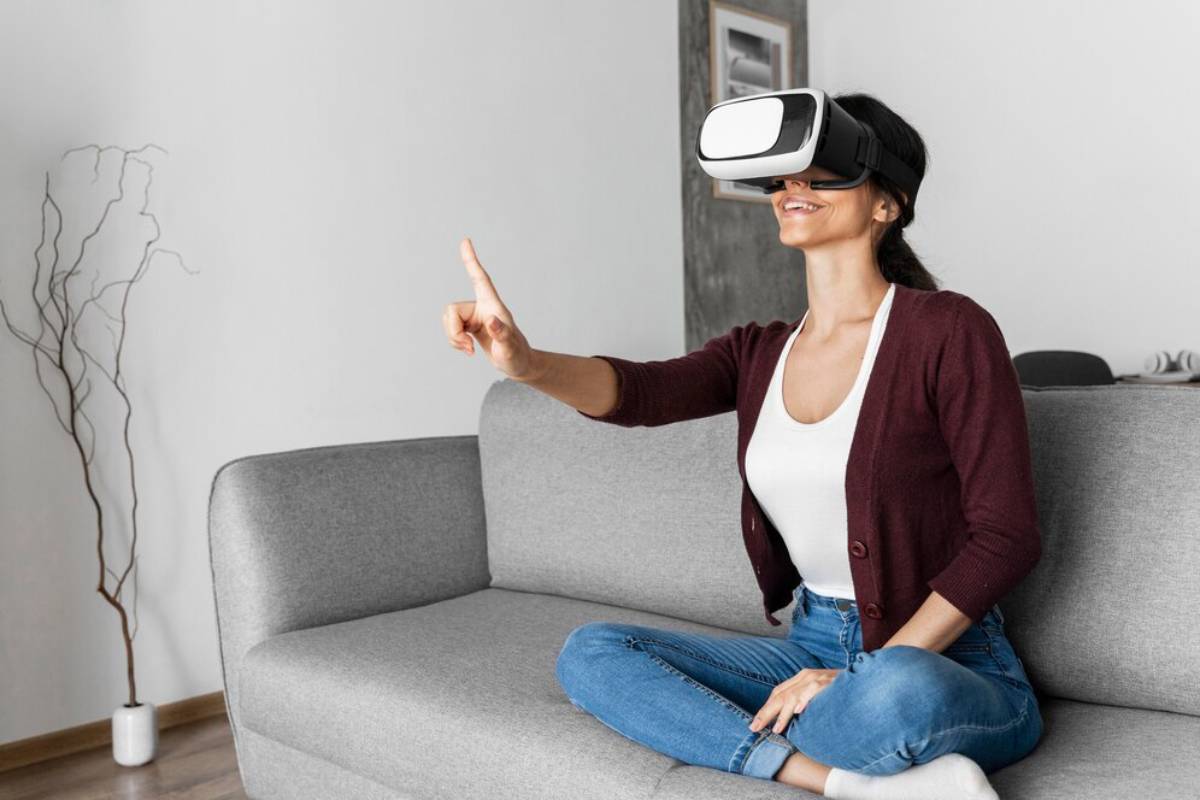Travel Blog

Virtual Reality: Exploring Destinations Sustainably
You don’t need a plane ticket to see the world. Today, you can explore global destinations through a screen. Virtual reality (VR) brings the world to you.
With VR travel experiences, you can walk through museums, visit natural wonders, and learn about new places — all without leaving home.
This is more than just a trend. It’s a way to travel without harm. Sustainable virtual tourism is growing fast. It helps reduce carbon emissions, protect nature, and make travel more accessible.
This guide shows how eco-friendly exploration through VR can support your green travel goals. You’ll find easy tools, smart tips, and real benefits.
Why Traditional Travel Has an Impact

Travel has a big environmental cost.
Common issues include:
- Flights that release carbon
- Hotels that use lots of energy and water
- Crowds that damage natural sites
- Transport that increases pollution
Many popular places are under pressure from too many visitors. Coral reefs, ancient ruins, and small cities all struggle to cope.
Virtual travel offers a cleaner, smarter way to explore.
What Is Virtual Travel?
Virtual travel lets you visit places using technology.
With a VR headset or mobile device, you can:
- Watch 360° videos of famous places
- Take guided tours of museums or cities
- Explore nature trails and national parks
- Learn about cultures and history from locals
It’s immersive, safe, and fun — and it doesn’t harm the places you visit.
Benefits of Sustainable Virtual Tourism
1. No Flights, No Emissions
Flying creates a lot of carbon. A single long-haul flight can produce more emissions than some people create in a year.
With VR, you avoid:
- Plane fuel
- Airport energy use
- Ground transport emissions
Every trip skipped saves carbon.
2. No Damage to Fragile Places

Some places can’t handle crowds. VR helps protect them.
It keeps:
- Natural parks cleaner
- Cultural sites safe
- Wildlife undisturbed
You get the experience, but without the footprint.
3. Easy Access for All
Not everyone can travel.
Reasons include:
- Health or mobility issues
- Budget limits
- Travel restrictions
VR makes travel possible for more people. It’s inclusive and affordable.
Best VR Travel Apps and Platforms
1. Google Earth VR
Fly over cities and explore the world in 3D.
Great for:
- Geography lovers
- Pre-trip research
- Dreamers and planners
Available on: PC VR headsets
2. National Geographic Explore VR
Take part in missions around the world.
Explore:
- Antarctica by kayak
- Machu Picchu by foot
- Wildlife with local guides
Available on: Oculus Quest
3. Wander
Use real-world Street View images in VR. Walk through real streets and landscapes.
Best for:
- Exploring your next destination
- Casual discovery
- Sharing with friends
Available on: Oculus and other VR systems
4. Ascape VR
Watch 360° travel videos. No headset needed.
Enjoy:
- City tours
- Nature experiences
- Cultural festivals
Available on: Mobile and web
5. YouVisit
Take virtual tours of universities, cities, and attractions.
Ideal for:
- Students
- First-time travellers
- Cultural education
Available on: Web and mobile
How to Use VR for Eco-Friendly Exploration
Use VR to Replace a Flight
Some long-haul trips can be replaced by a VR experience.
Try it with:
- Far-away destinations
- Fragile ecosystems
- Bucket-list landmarks
It’s a smart way to save money and reduce harm.
Use VR to Plan a Future Trip
Preview your destination before going.
You can:
- Learn about local customs
- Discover hidden spots
- Avoid crowded areas
- Choose more responsible options
Better planning = better travel.
Use VR to Learn and Share
Virtual experiences can teach you about:
- Climate change
- Culture and heritage
- Environmental issues
You can also share what you’ve learned with others.
What Makes a Good Sustainable VR Experience?
Look for VR experiences that:
- Tell real stories from locals
- Educate, not just entertain
- Work on low-power devices
- Respect cultural traditions
- Are accessible to many users
Good VR builds respect and understanding.
Limitations of Virtual Travel
VR is helpful, but it has limits.
- It can’t replace the feeling of being there
- It depends on tech and power
- It needs good content and creators
Still, it’s a strong tool for sustainability — especially when used with care.
Real-Life Example
Scenario: You want to visit the Great Barrier Reef.
Traditional trip:
- Long-haul flight
- High emissions
- Risk to coral from snorkelling
Virtual option:
- 360° reef tour
- Coral research experience
- Education on ocean health
Result: Learning, wonder, and no damage — all from home.
Future of Virtual Travel
VR travel will grow.
Soon, you may see:
- Real-time tours with live guides
- Support for local businesses via digital tips
- Virtual events and festivals
- Eco-travel planning built into VR platforms
As tech improves, so will the experiences.
Getting Started with VR Travel
- Try YouTube for free 360° travel videos
- Use a mobile headset (like Google Cardboard) to begin
- Choose platforms with learning and sustainability goals
- Share your experience to raise awareness
- Use VR to cut down on your real-world travel footprint
Travel With Technology, Explore With Purpose
Travel doesn’t always mean going far. With VR travel experiences, you can explore new places, learn new things, and reduce your impact.
Sustainable virtual tourism is a smart choice for curious, eco-conscious travellers. It helps protect the world while still letting you enjoy it.
With the right tools, you can travel better — from your living room.
Call to Action

Ready to explore the world the smart way?
Choose one VR platform from this guide. Use it to learn, plan, or replace a high-impact trip. Then tell others how eco-friendly exploration can change the way we travel.
Want a checklist of top virtual travel tools or a side-by-side comparison of VR platforms? Just ask — it’s ready to support your readers.









